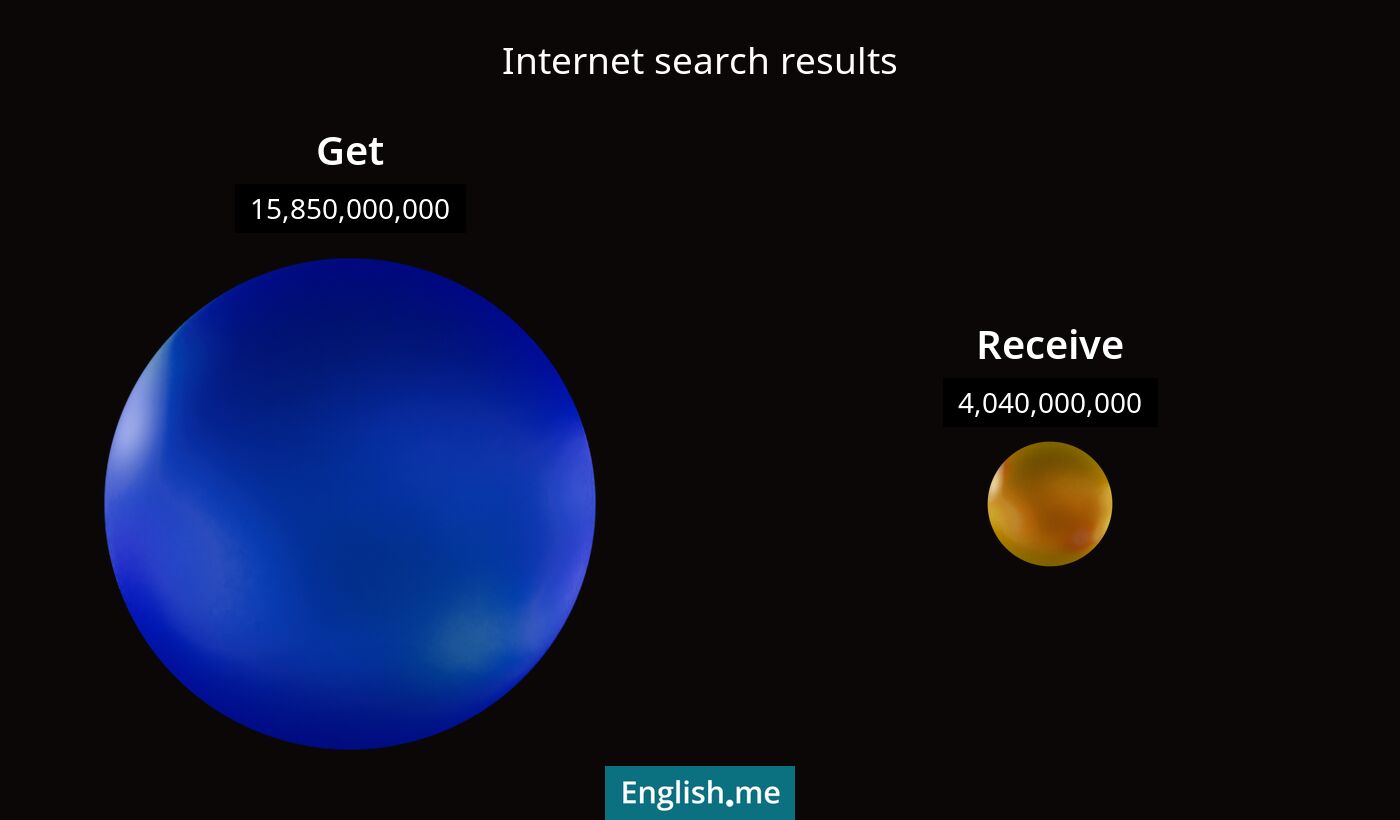Exploring the contrast between "get" and "receive"
Reviewed and edited by  Anwar Kareem 17/11/2024, 16:44
Anwar Kareem 17/11/2024, 16:44
English.me team member

 What is similar?
What is similar?
Both "get" and "receive" denote the act of coming into possession of something or being given something. They can both be used in contexts where someone is taking delivery of an item or gaining something either physically or abstractly.
 What is different?
What is different?
"Get" is generally more informal and can imply obtaining something through effort or action. "Receive" is more formal and is often used in contexts where something is given to someone without much action required on their part. The two words may differ in tone and specificity depending on the context.
 Which one is more common?
Which one is more common?

 Examples of usage
Examples of usage
Get- I need to get some groceries from the store.
- Did you get my message yesterday?
- She managed to get a good deal on the car.
- You will receive your package within a few days.
- I received a warm welcome when I arrived.
- He received the award for his excellent performance.

 English
English español
español française
française italiano
italiano deutsche
deutsche 日本語
日本語 polski
polski česky
česky svenska
svenska Türkçe
Türkçe Nederlands
Nederlands